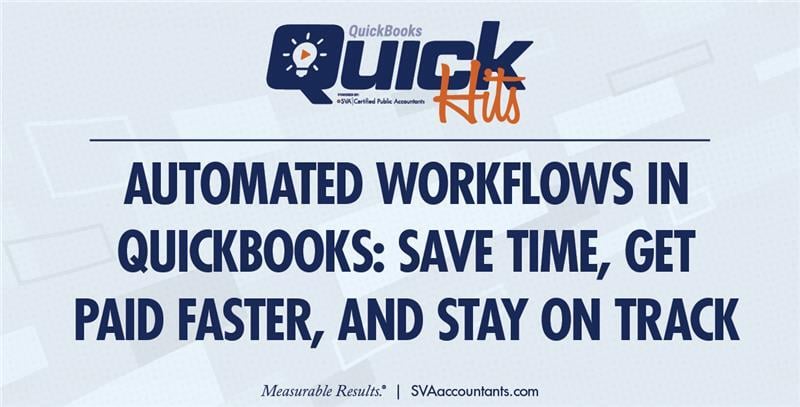Managing finances is one of the most time-consuming parts of running a business. Between chasing invoices, paying bills, and keeping everything organized, it’s easy to get bogged down in repetitive tasks.
That’s where automated workflows in QuickBooks step in. Workflows help businesses cut down on manual work, speed up payments, and keep processes running smoothly.
Why Automation Matters
Instead of spending hours sending reminders or tracking down paperwork, QuickBooks allows you to set up smart workflows that handle these steps for you. Think of it as putting parts of your accounting on autopilot, freeing you up to focus on growth and client relationships.
Recurring transactions and bank rules, for example, already offer a solid foundation for automation. But QuickBooks takes it further with customizable workflows that tackle both accounts receivable (AR) and accounts payable (AP) tasks, thus reducing friction across the entire financial cycle.
Key Features That Save Time
1. Invoice and Payment Reminders
No one enjoys chasing unpaid invoices. With QuickBooks, reminders can be scheduled to go out automatically so customers are nudged without you having to hit “send.” For overdue invoices, you can even have QuickBooks add a clear “Overdue” note directly to the invoice, making it harder for clients to overlook.
2. Approval Workflows
For businesses with multiple decision-makers, approvals can cause bottlenecks. QuickBooks Advanced offers approval chains for invoices and bills, routing them to the right people in the right order. Notifications can be sent via email, tasks, or push alerts, so nothing slips through the cracks.
3. Notifications and Alerts
Workflows can notify you when key events occur, such as when a new invoice is created, when payment details are missing, or if changes are made after an invoice is sent. These alerts keep you informed without constant manual oversight.
4. Customer and Vendor Communication
QuickBooks doesn’t just automate reminders for your internal team. It also improves communication with customers and vendors. Automated payment receipts confirm when you’ve received funds, while bill payment notifications let vendors know when money is on the way. This transparency helps build trust and prevents confusion.
5. Custom Templates for Flexibility
Whether it’s onboarding employees, sending recurring customer statements, or handling vendor credits, QuickBooks includes ready-to-use templates that make it simple to get started. You can also build custom workflows tailored to your unique processes, adjusting conditions and messages as needed.
Benefits for Small Businesses and Growing Teams
| Get Paid Faster |
Automatic reminders and overdue notices help keep cash flow steady. |
| Stay Organized |
Approvals and alerts reduce errors and missed steps. |
| Save Time |
Manual follow-ups and repetitive data entry become a thing of the past. |
| Build Stronger Relationships |
Proactive communication reassures customers and vendors alike. |
Putting It Into Practice
Automated workflows in QuickBooks are more than a convenience. They’re a smart way to work. Whether you’re running a small business or managing a larger finance team, these tools can transform the way you handle day-to-day accounting.
From faster payments to smoother approvals, automation lets you take control of your financial processes while keeping everything on track.
© 2025 SVA Certified Public Accountants

